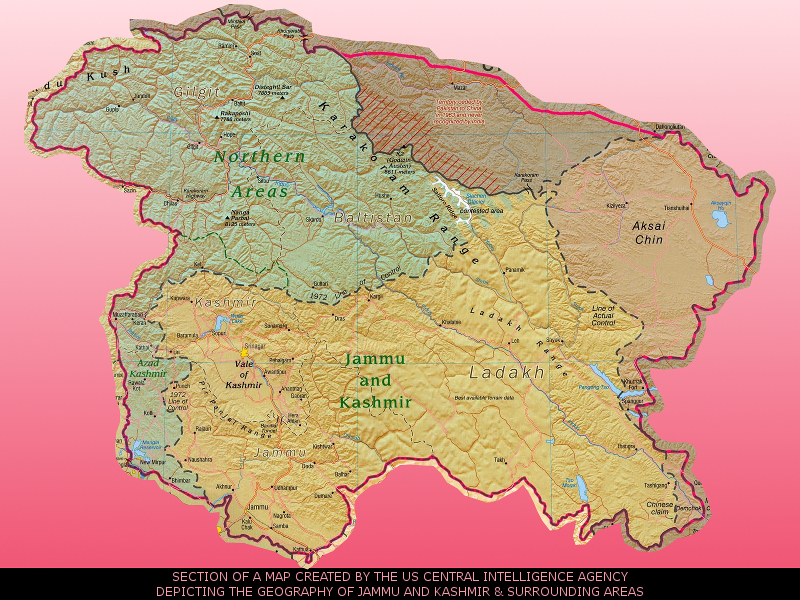By Alok Jagdhari
This is a revisiting of history to bust the propaganda being circulating blaming Nehru for the loss of Aksai Chin.
In order to understand Aksai Chin, we need to understand the following pieces of geo-political history:
- The history of the Qing Empire and its collapse at the end of 19th Century
- The Boxers’ Rebellion in China of 1908 and the invasion of China by the eight Colonial Powers
- The Anglo-Russian rivalry in Persia, Afghanistan and Tibet and the eventual Anglo-Russian Pact signed in 1907
- The Anglo-Tibetan Treaty (Shimla Treaty of 1913-14)
Expanding:
1: The Qing Dynasty ruled China between 16th Century and 19th Century. They were Manchus, who replaced the Ming Dynasty and created one of the largest Empire the world has ever witnessed.
They conquered Mongolia and Tibet and ruled the 5th largest landmass ever controlled by any Empire. However, towards the end of 19th Century the Qing Empire was hugely weakened due to internal rebellion, Opium Wars (with Colonial Powers, who imposed unequal treaties on China).
Eventually, the Qing Dynasty became a hostage to the 8 Colonial Powers.
However, it’s important to remember that the Qing Dynasty did control all of Tibet (there was a local Kingdom but under the overall suzerainty of the Qing Emperor)
2. Towards the end of 19th Century, the gradual creep of Christianity by the Colonial Powers (and a number of other issues), caused serious internal rebellion and revolts against the Qing Dynasty
It all eventually came to a boil in early 20th Century in the form of what’s now known as the Boxers’ Rebellion. These rebels were loyal to the Qing Court, and were revolting against the Colonial Powers
The Empress Dowager Cixi, who was the power behind the throne since 1861, sided with the Boxers and they attacked the Colonial Enclaves all over China. Eventually, the Colonial Powers overwhelmed the rebels and put an end to the Qing Dynasty. This was then replaced by a “Nationalist Republic”. However, during this turmoil, nearly all of the provincial Lords rebelled against the Qing Emperor and defeated the Imperial Forces
Tibet was one of these Provinces that declared independence from Qing Empire and defeated the Imperial Forces and proclaimed an Independent Nation
3. Russia and Britain had been locked into a war of supremacy in Asia (also called The Great Game). The key battlegrounds for this game were Persia, Afghanistan and Tibet. This is what lead the British to send the First and Second British Expeditionary Forces into Afghanistan (and that’s another long story, one of the most fascinating one i have ever read)
However, towards the end of 19th Century Russia and Britain were getting increasingly alarmed with the rise of the German Empire. When the Russian Czarist Forces were decisively defeated by the rising Japanese Imperial Forces, the Russians were alarmed enough to strike a Treaty with Britain to form a political alliance to oppose the German/ Ottoman Axis that was emerging (in conjunction with the Austro-Hungarian Empire).
This lead to the 1907 Anglo-Russian Treaty about political and military alliance in Europe. The Treaty, however, also guaranteed Russia that Britain would NOT interfere in the internal affairs of Tibet or Afghanistan, apart from carving out Persia between the two powers
4. Finally, we come to the meat of the matter – the Anglo-Tibetan Treaty of 1913/14, which would mean nothing without the context above.
In 1913, Britain, China and Tibet convened a Treaty Conference in Shimla. Now remember, Qing Dynasty has fallen, the Chinese Central Empire or the emerging Republic have no strength to oppose the British and the Tibetans are independent. Britain has already defeated China in the Boxers’ Rebellion. Hence, in this conference the British emissary, Sir Henry McMahon (Secretary of State for British India), demands that Tibet make changes to its territory. The Outer Tibet is transferred to the Government of Independent Tibet (Corresponding to the current boundaries of Tibet Autonomous Region),
Inner Tibet was given to Chinese Republic, while the Southern Tibet and Western Tibet were to be transferred to British Empire.
The Western Tibet = Aksai Chin, ~38,000 Sq Km
Southern Tibet = Northern Parts of Arunachal Pradesh, ~90,000 Sq Km
The Tibetan rulers agreed. However, the Chinese Government’s plenipotentiary, Ivan Chen, left the meeting in a huff in protest. He refused to ratify the Treaty on behalf of the Chinese Republican Government
The Agreement was left in a limbo for an year, but the Tibetan Representative and the British re-assembled in Shimla and signed the Treaty with the British recognizing Tibetan suzerainty over the entire region and removing all mentions of any benefits of the Treaty to the Chinese Republic.
This was the beginning of the McMahon Line, which became the de-facto border between British India and China/ Tibet.
However, this was followed by even more drama. And this is where the Anglo-Russian Treaty comes in. The British Government in London rejected the Shimla Treaty of 1914 BECAUSE it contravened the terms of Anglo-Russian triple-entente since was considered an interference in the internal affairs of Tibet.
As a result, the McMahon Line was established, but the Treaty that created this border was left in a limbo.
The Treaty was never verified by any of the signatories. Eventually, the Tibetan Government repudiated the Treaty. The Chinese had never accepted it in the first place.
However, the situation changed in 1921 when the British and Russians repudiated their 1907 Treaty by mutual consent. However, everyone had already forgotten about the Shimla Treaty of 1914
Till 1935, that is. When one British official pulled up this Treaty and published it in a Gazette. backdating it to 1929!
But no one really cared very much. The Chinese were still busy fighting each other. After the Imperial China finished fighting the Nationalist China, the Nationalist China started fighting with Communist China
And then both started fighting with the Japanese invading forces. So no one had the strength or the attention to really figure out what was happening in a God forsaken place called Aksai Chin where no one lived and which held absolutely no strategic or economic value to anyone.
Meanwhile, the British had transferred the control of Aksai Chin to the Kingdom of Kashmir. and McMahon Line remained the de-facto border between British India, Kingdom of Kashmir, Tibet Autonomous Region and China.
Into this situation was Indian Republic born. Inheriting the McMahon Line as the border on its Northern and North-eastern border. Like all over the world, the British had left a steaming pile of gobar for us.
After 1947, the actual territory of Aksai Chin was very lightly controlled. ITBP was formed and would do some routine patrolling during the peak summer months when it was accessible. The region was not accessible nearly 9 months in the year. Given paucity of resources and the remoteness of the region, the ITBP never really ever managed to patrol the entire territory. There was no infrastructure, no roads, no cold weather gear and no real threat to the region. No one really ever wanted it. No one lived there. It was merely a trade route between China and Tibet and Ladakh and Tibet.
For all those who want to understand and objectively explore whether Nehru “lost” Aksai Chin, this background will have some value. Those who want to paint Nehru as a villain, nothing will help.
Disclaimer: The opinions expressed within this article are the personal opinions of the author. AlignIndia does not take any responsibility for the content of the article.
Alok Jagdhari is a Financial Services Professional who lives in the United States. He studied at IIM-A and has a degree in Economics


